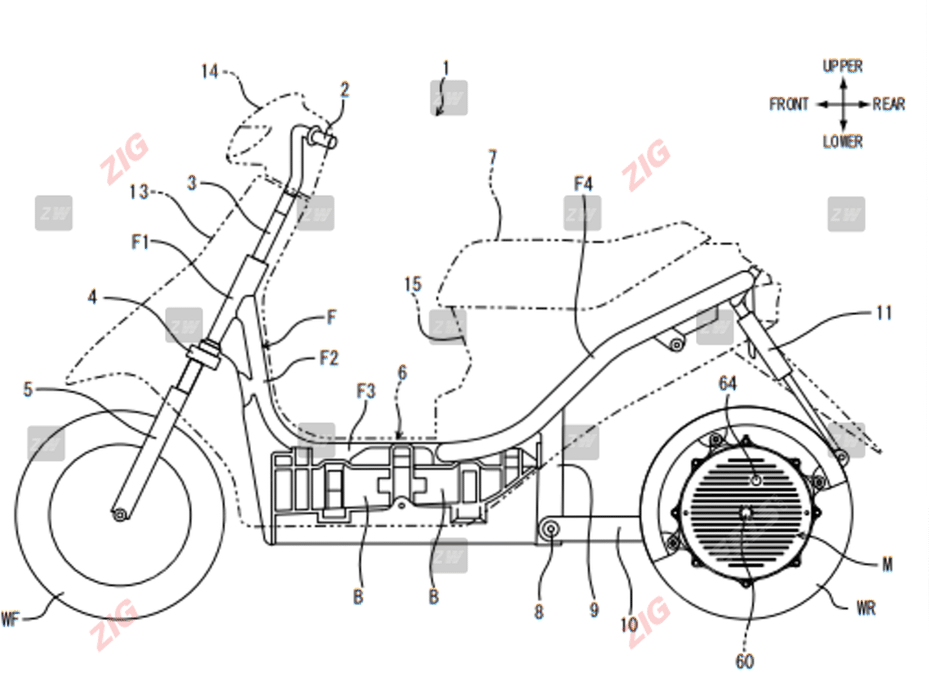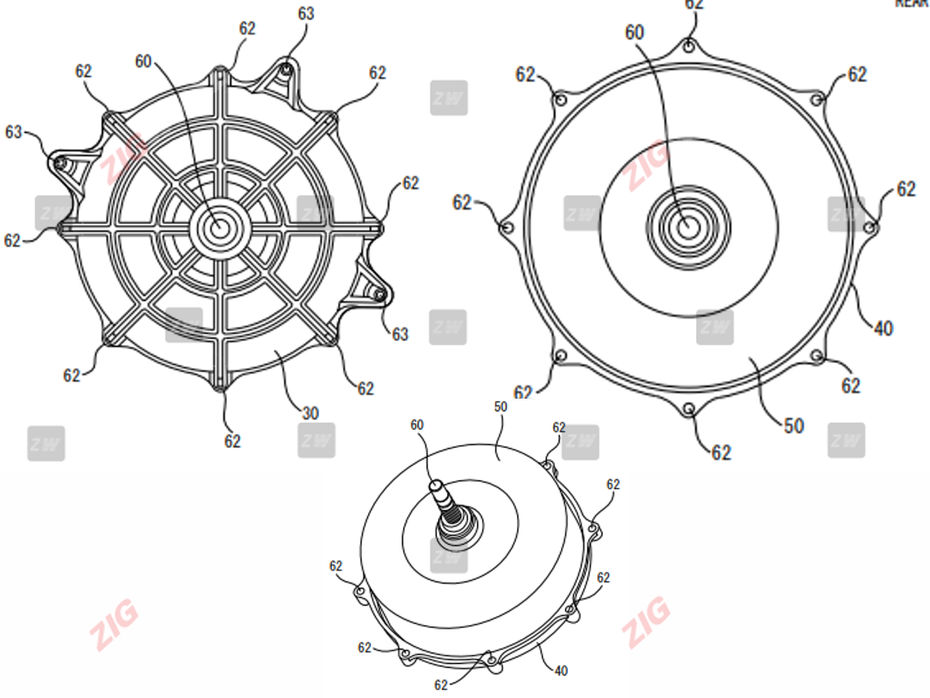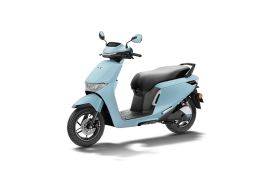
EICMA 2022: Top Electric Two-wheeler Highlights | Honda EM1 e:...
- Nov 9, 2022
- Views : 20005


At the recent launch of the Honda Shine 100 in Mumbai, Honda disclosed that it will be revealing more details about its upcoming electric scooter as early as March 29, 2023. While said electric scooter is expected to be launched sometime early next year, the company’s patent drawings have surfaced online which reveal just how the company plans to mount the scooter’s electric motor.
Unlike the TVS iQube’s hub motor, or the Ather 450X’s mid-mounted motor with a belt drive, Honda’s upcoming electric scooter will have its motor mounted on the swingarm, right adjacent to the rear wheel, similar to what we’ve seen on the recent Hero Vida V1.

The patent drawings clearly show the electric motor mounted to the end of the swingarm on the left side of the scooter, with the motor’s output shaft exiting to the right, to which the rear wheel will be attached. The drawings also show large air-cooling fins on the outside of the motor.
According to the design document, the advantages of using this type of motor mounting are manifold.

The final form of Honda’s electric scooter for India still remains to be seen, but with this sort of a motor mounting system, we believe the company could easily accommodate an electric drive train in (the form of) an existing product such as its best-selling Activa 6G. So, an electric Activa doesn’t seem like such a far-fetched idea after all.


EICMA 2022: Top Electric Two-wheeler Highlights | Honda EM1 e:...

All New 2025 Honda Activa e: Features Explained: Auto Expo 2025

Top-5 Scooters Launched At Auto Expo 2025

Honda Activa e: Same Price Other Options: Auto Expo 2025

BREAKING: Honda Activa e and QC1 Launched at Auto Expo 2025

Top 5 Scooters We Expect At Bharat Mobility Expo 2025

Two-Wheeler News Weekly Wrap-Up: Honda Activa e:, Royal Enfield...

Honda Activa e and QC1 E-scooters Pre-Bookings Open

Bikes and Scooters to be Launched in January 2025
 Ola S1 Pro
Ola S1 Pro
 TVS iQube
TVS iQube
 Bajaj Chetak
Bajaj Chetak
 Ather Rizta
Ather Rizta
India's largest automotive community
 Honda Activa 6G
Rs. 78,684
Honda Activa 6G
Rs. 78,684
 Honda Activa 125
Rs. 95,140
Honda Activa 125
Rs. 95,140
 Honda Dio (2020-2024)
Rs. 73,212
Honda Dio (2020-2024)
Rs. 73,212
 Honda Dio 125
Rs. 86,851
Honda Dio 125
Rs. 86,851
 Honda Dio
Rs. 74,930
Honda Dio
Rs. 74,930
 Honda SP125
Rs. 92,110
Honda SP125
Rs. 92,110
 Honda Shine
Rs. 83,251
Honda Shine
Rs. 83,251
 Honda SP160
Rs. 1.21 Lakh
Honda SP160
Rs. 1.21 Lakh
 Honda Shine 100
Rs. 66,900
Honda Shine 100
Rs. 66,900
 Honda Hornet 2.0
Rs. 1.43 Lakh
Honda Hornet 2.0
Rs. 1.43 Lakh
 Mahindra BE 6
Rs. 18.90 Lakh
Mahindra BE 6
Rs. 18.90 Lakh
 Hyundai Creta Electric
Rs. 17.99 Lakh
Hyundai Creta Electric
Rs. 17.99 Lakh
 Mahindra XEV 9e
Rs. 21.90 Lakh
Mahindra XEV 9e
Rs. 21.90 Lakh
 MG Windsor EV
Rs. 13.99 Lakh
MG Windsor EV
Rs. 13.99 Lakh
 Vayve Mobility Eva
Rs. 3.25 Lakh
Vayve Mobility Eva
Rs. 3.25 Lakh